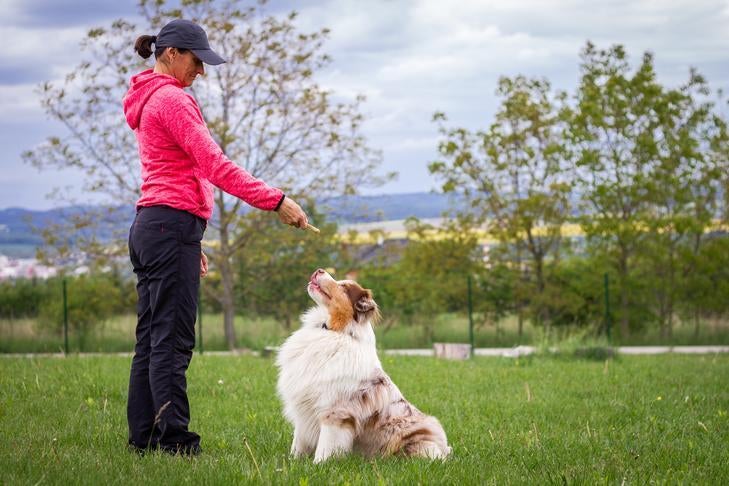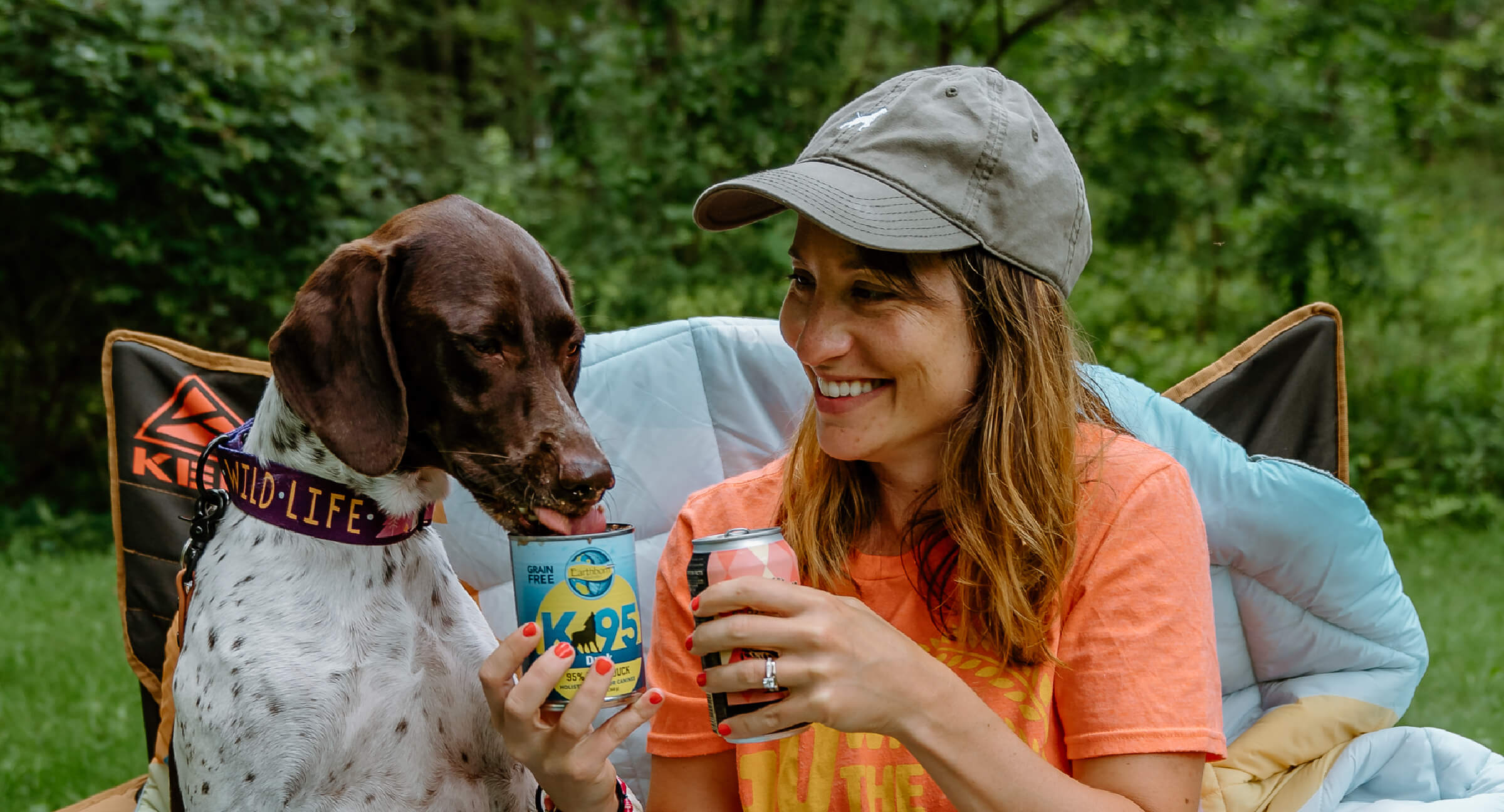How to Incorporate Games right into Your Dog Training Regimen
Important Tips for Effective Dog Training: An Overview for Animal Owners
Efficient canine training is a multifaceted process that requires a strategic strategy tailored to both the pet's temperament and the owner's purposes. Understanding just how to navigate these barriers can substantially boost the training experience, inevitably changing the relationship in between proprietor and canine.
Recognizing Dog Actions
Recognizing pet behavior is essential for efficient training and fostering an unified partnership between dogs and their owners. Pet dogs communicate largely via body movement, articulations, and actions, making it critical for proprietors to interpret these signals accurately. Identifying a pet dog's position, tail setting, and ear orientation can supply understandings into its emotional state. A wagging tail does not always suggest joy; it can also indicate excitement or stress and anxiety.

Socializing plays a significant role in canine habits; direct exposure to numerous atmospheres, people, and various other pets can dramatically influence a pet's personality. In addition, variables such as type features and specific character ought to lead training methods, as some types might have certain behavioral traits that require tailored methods. By recognizing these components, owners can create a helpful setting that urges positive actions, causing successful training outcomes and a deeper bond with their pet dogs.
Establishing Regular Commands
Efficient interaction with your canine begins with developing consistent commands. This fundamental element of training is important for promoting understanding between you and your family pet. Uniformity in the commands you utilize makes certain that your pet can dependably link particular words or expressions with the desired behaviors.
When picking commands, choose clear, unique words that are very easy to state and set apart from each other. Avoid making use of similar-sounding commands that may puzzle your dog. Using "sit" and "remain" is ideal, however "sit" and "struck" might lead to misconceptions.
In addition, maintain the exact same tone and volume for every command. Dogs are sensitive to vocal cues, so varying your tone can produce confusion.
It is equally crucial to make sure that all household members are on the exact same page concerning the commands used. A united front in command use will certainly stop mixed signals and reinforce the learning process.
Favorable Reinforcement Techniques
The power of favorable support in pet training depends on its capacity to encourage wanted behaviors with benefits and appreciation. This strategy is based in the concept that actions adhered to by beneficial results are more probable to be repeated. By including positive reinforcement into your training regimen, you can properly form your dog's habits in a constructive way.
To carry out positive support, it's necessary to recognize what encourages your canine, whether it be treats, playthings, or verbal appreciation. When your pet dog does a desired action, such as resting on command, right away reward them with a reward or affection. This organization in between the command and the positive end result reinforces their understanding.
It's important to timing the benefits appropriately; delivering the support within seconds of the preferred habits helps your canine make the link (dog training). In addition, consistency is vital-- ensure that all member of the family utilize the very same commands and benefit systems to avoid complication

Slowly, you can reduce the regularity of deals with as your dog finds out the habits, transitioning to praise or periodic rewards. This approach not only promotes a strong bond in between you and your pet dog yet also promotes a favorable knowing environment, making training a delightful experience for both.
Socialization and Communication
Regularly exposing your dog to a selection of atmospheres, individuals, and other pets is critical for their social advancement. Socializing needs to begin early, preferably throughout the important home window of 3 to 14 weeks, when young puppies are most receptive to new experiences. Nevertheless, older canines can also take advantage of continuous socialization efforts.
Present your pet to different setups, such as parks, pet-friendly stores, and urban locations. This exposure assists them adjust to numerous stimuli, minimizing anxiety and fear feedbacks. Urge favorable communications with various other dogs and individuals, making sure that these experiences are regulated and risk-free to promote self-confidence.
Make use of organized playdates with well-mannered canines, as this can boost your canine's social skills and instruct them ideal habits. Obedience classes and training sessions likewise give superb possibilities for socializing, allowing your pet dog to connect with others in a supervised setting.
Display your pet dog's body movement during communications, as this will help you assess their comfort from this source level. Slowly enhance direct exposure to more challenging scenarios while making sure that each experience declares. A well-socialized pet dog is more probable to display balanced habits, making them a joy to have in any kind of setup.
Dealing With Usual Training Obstacles
Every canine proprietor will certainly come across training obstacles at some time, no matter their pet dog's age or socialization level. Recognizing typical problems such as stubbornness, interruptions, and fearfulness can assist in establishing effective techniques for improvement.

Diversions throughout training sessions can thwart emphasis. To battle this, begin training in a quiet environment with very little stimuli. Slowly introduce interruptions as the pet dog comes to be a lot more competent in commands. Short, frequent training sessions are also effective in preserving attention.
Terror can prevent a pet dog's discovering process. Gradual desensitization to the resource of anxiety, paired with favorable support, can assist reduce anxiety. Perseverance is crucial; never ever require a canine into a scenario that triggers distress, as this may intensify the look at here now concern.
Eventually, understanding and dealing with these common obstacles with an organized strategy will certainly foster a more efficient training experience, reinforcing the bond in between canine and proprietor while promoting reliable understanding.
Verdict
In summary, effective pet training depends on a comprehensive understanding of canine actions, the establishment of regular commands, and the application of positive support techniques. Socializing plays a critical function in creating well-adjusted family pets, while attending to common training difficulties requires persistence and flexibility. By carrying out these important strategies, family pet proprietors can foster a solid bond with their dogs and promote desirable actions, ultimately causing a harmonious connection in between humans and their canine buddies.
Understanding pet behavior is vital for reliable training and fostering a harmonious connection between pooches and their owners.Socializing plays a significant function in pet habits; direct exposure to numerous environments, people, and various other pets can significantly influence a pet's temperament.The power of positive reinforcement in pet dog training exists in its capacity to encourage desired habits with benefits and appreciation. By including favorable reinforcement into your training program, you can successfully form your pet dog's actions in a constructive manner.
In summary, successful canine training relies on an extensive navigate to these guys understanding of canine actions, the facility of regular commands, and the application of favorable support strategies.